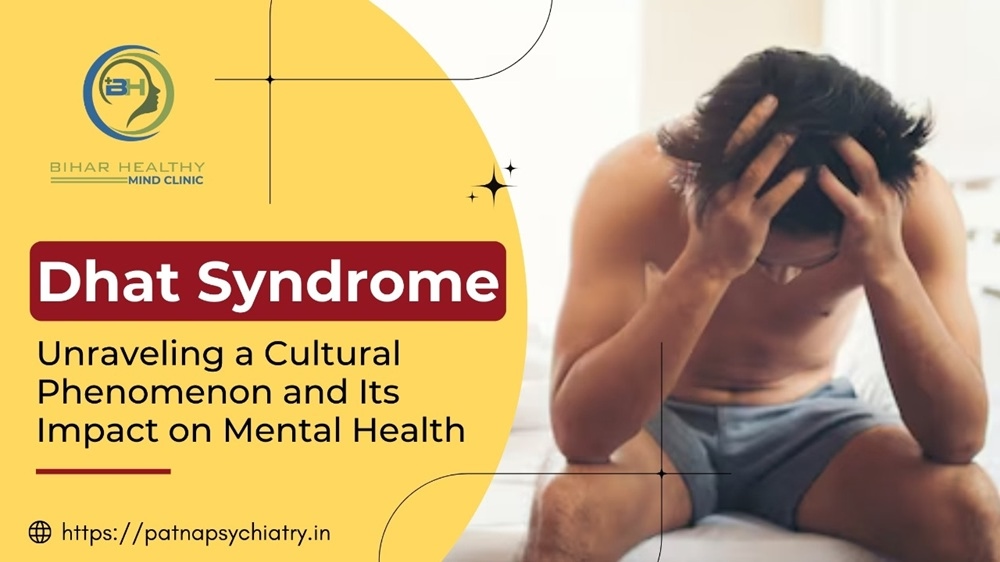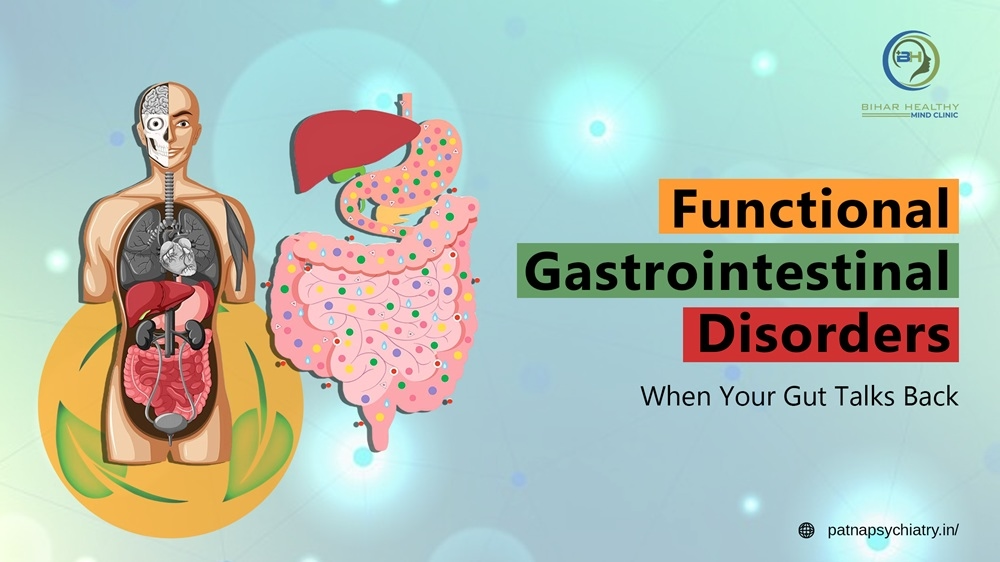In the heart of South Asia, there's a medical condition that's often shrouded in mystery, stigma, and cultural beliefs — Dhat Syndrome. While the name might seem unfamiliar to many, it’s a term that holds deep significance for men, particularly in India, Pakistan, Nepal, and Sri Lanka. It’s not a disease in the traditional sense, but more of a psychosomatic concern, deeply rooted in cultural beliefs surrounding sexual health, vitality, and masculinity.
Let me take you through the narrative of Dhat Syndrome, not just from a clinical viewpoint but as a journey into the lives of those it affects.
The Story of Dhat Syndrome: A Silent Sufferer
Imagine a young man in his mid-twenties, let's call him Amit. Amit grew up in a small village in India, a place where discussions about sexual health are often taboo, and information is scarce. Since his teenage years, Amit noticed a whitish discharge during urination, sometimes after a vivid dream. Concerned, he did what most young men in his village do — he sought advice from friends, relatives, and local healers. They all had the same warning: “This is dangerous. You are losing your life force.”
As time passed, Amit grew increasingly anxious. He started feeling weak, lethargic, and mentally drained. Every time he saw this discharge, he believed he was losing something precious — his semen, which his cultural beliefs told him was the essence of his strength and masculinity. Over time, his worry turned into a full-blown health anxiety, affecting his daily life, relationships, and work.
Amit’s experience is far from unique. It mirrors the lives of countless men who silently suffer under the weight of Dhat Syndrome, an affliction characterized by the obsessive fear of losing semen and its perceived negative impact on physical and mental health.
What Exactly is Dhat Syndrome?
At its core, Dhat Syndrome is a condition driven by cultural beliefs, primarily found in the Indian subcontinent. It's the fear and anxiety surrounding the idea of losing semen through urination, nocturnal emissions, or masturbation. In many traditional belief systems, semen is considered the vital essence of life. This notion isn’t new — it traces back to ancient Ayurvedic texts, which highlight the transformation of food into blood, then marrow, and finally, semen, the most refined essence.
For men like Amit, the loss of this precious fluid is seen as a direct threat to their health, vitality, and sexual prowess. They may believe it leads to physical weakness, mental fatigue, sexual dysfunction, and even early death. These concerns, though ungrounded in scientific evidence, are deeply embedded in the psyche, creating a cycle of fear and distress.
The Cultural Roots of Dhat Syndrome
To understand Dhat Syndrome, one must delve into the cultural backdrop that nurtures such beliefs. In many parts of India and its neighboring countries, sexual health education is minimal or non-existent. Most young men grow up learning about sex and their bodies through informal sources — friends, traditional healers, or misleading advertisements. These sources often perpetuate myths about semen being the key to manhood, strength, and longevity.
In some rural areas, men are led to believe that every drop of semen lost is equivalent to losing a part of their essence, their vitality. This belief is often compounded by local folklore, traditional healers, and sometimes even outdated medical advice. The fear of semen loss becomes so pervasive that it manifests in both psychological and physical symptoms
Historical Timeline of Dhat Syndrome
Ancient Ayurvedic Texts
Semen regarded as vital fluid, essential for health and vigor
19th Century
Western physicians in India document cases resembling Dhat syndrome
Mid-20th Century
Formal recognition of Dhat syndrome as a culture-bound syndrome
Present Day
Ongoing research and debates about classification and treatment
| Risk Factors for Developing Dhat Syndrome | |
| Risk Factors | Description |
|---|---|
| Young Age | Typically affects males in their late teens to early thirties |
| Marital Status | More common in unmarried or recently married individuals |
| Conservative Attitudes | Strong adherence to traditional beliefs about sexuality and health |
| Limited Sex Education | Lack of accurate information about sexual health and normal bodily functions |
| Psychological Vulnerability | Predisposition to anxiety or depressive disorders |
Common Symptoms: It�s Not Just in the Mind
The clinical presentation of Dhat syndrome is characterized by a constellation of physical, psychological, and sexual symptoms. Patients typically present with complaints of weakness, fatigue, and anxiety related to perceived semen loss. The perceived loss may occur through various means, including nocturnal emissions, urination, or masturbation.
| Common Symptoms: It�s Not Just in the Mind | ||
| Physical Symptoms | Psychological Symptoms | Sexual Symptoms |
|---|---|---|
| Weakness and fatigue | Anxiety and depression | Erectile dysfunction |
| Muscle aches and pains | Poor concentration | Premature ejaculation |
| Headaches | Guilt and shame | Loss of libido |
| Palpitations | Hypochondriasis | Fear of impotence |
While Dhat Syndrome is rooted in cultural and psychological beliefs, its symptoms are often very real to those experiencing it. Men with this condition typically report a range of physical, emotional, and sexual issues. These may include:
- Physical Weakness: A profound sense of fatigue and lethargy, often accompanied by muscle pain or body aches. Many patients feel they are physically deteriorating because of semen loss.
- Mental Fog: Difficulty concentrating, forgetfulness, and a lack of interest in everyday activities.
- Sexual Dysfunction: This can manifest as premature ejaculation, erectile dysfunction, or a lack of sexual desire, further fueling the anxiety around semen loss.
- Emotional Distress: Anxiety, guilt, and sometimes depression are common in men with Dhat Syndrome. The fear that they are damaging their health through involuntary emissions or masturbation leads to overwhelming guilt.
Amit, for example, often felt too tired to go to work, and when he did, he struggled to concentrate. His intimate relationship with his partner also suffered, as he became convinced that he was losing his ability to perform sexually. This cycle of anxiety fed into his physical symptoms, making him feel even more helpless.
The Psychological Toll: Anxiety and Depression
What’s often overlooked in Dhat Syndrome is the psychological toll it takes. Men suffering from this condition are not just battling the physical symptoms; they are grappling with intense mental distress. The persistent belief that they are losing their life force can lead to obsessive thoughts, panic attacks, and social withdrawal.
In many cases, Dhat Syndrome is comorbid with other mental health conditions such as anxiety and depression. The fear of being judged or ridiculed often prevents men from seeking help, leaving them trapped in a cycle of self-diagnosis and self-treatment. This isolation exacerbates their condition, as they are left to battle their fears alone.
Take the case of Sanjay, another young man diagnosed with Dhat Syndrome. Sanjay became so consumed by his symptoms that he began avoiding social gatherings and even quit his job. His constant worry about semen loss made him anxious around others, and he developed a fear of intimacy, believing that sexual activity would worsen his condition.
Assessment and Evaluation Techniques
Comprehensive assessment of Dhat syndrome requires a multifaceted approach, combining clinical interviews, standardized questionnaires, and physical examinations. Clinicians must be culturally sensitive and create a non-judgmental environment to facilitate open communication about sensitive topics.
Detailed history-taking, exploring symptoms, beliefs, and cultural context.
Use of validated tools like the Dhat Syndrome Questionnaire (DSQ).
Ruling out organic causes of symptoms and addressing patient concerns.
Evaluation of comorbid conditions using tools like PHQ-9 and GAD-7.
Treatment Approaches: An Overview
Treatment of Dhat syndrome typically involves a multidisciplinary approach, combining pharmacological interventions, psychotherapy, and psychoeducation. The goal is to address both the physical symptoms and the underlying psychological distress while respecting cultural beliefs and practices.
| Pharmacotherapy | Psychotherapy | Psychoeducation |
|---|---|---|
| Use of antidepressants and anxiolytics to manage comorbid depression and anxiety | Cognitive-behavioral therapy and other evidence-based approaches to address maladaptive beliefs | Providing accurate information about sexual health and normal physiological processes |
The Role of Traditional Healers
In rural areas, traditional healers, also known as Hakims or Vaids, play a significant role in shaping the understanding of Dhat Syndrome. These healers often offer remedies based on ancient texts and beliefs about semen retention. They prescribe herbal concoctions, dietary changes, and lifestyle modifications aimed at preserving semen and restoring vitality.
While these treatments may offer some psychological comfort, they do little to address the underlying health anxiety that drives the condition. In fact, reliance on such treatments can often delay the diagnosis and treatment of underlying mental health conditions.
The Medical Perspective: Debunking Myths
From a medical standpoint, Dhat Syndrome is not a physical illness. The discharge that men often describe as semen is, in most cases, a perfectly normal prostatic fluid mixed with urine or released during nocturnal emissions. These emissions are a natural bodily function and are not indicative of any underlying health issue.
Doctors and psychiatrists who treat Dhat Syndrome often emphasize the importance of psychoeducation — educating patients about their bodies, normal sexual functions, and the nature of nocturnal emissions or semen loss. However, given the deep-rooted cultural beliefs, this process can be challenging.
Case Study: Breaking the Cycle
Let’s revisit Amit. After years of suffering in silence and seeking ineffective remedies from local healers, Amit finally visited a psychiatrist. Initially, he was hesitant to believe that his symptoms were rooted in anxiety rather than a physical illness. The psychiatrist took a compassionate approach, explaining the nature of Dhat Syndrome and the psychosomatic connection between his mind and body.
Amit was introduced to cognitive-behavioral therapy (CBT), a form of therapy that helps individuals identify and change irrational thought patterns. Through therapy, Amit began to challenge his long-held belief that semen loss was harmful. He learned relaxation techniques to manage his anxiety and was encouraged to engage in physical activities to regain his sense of vitality.
Gradually, Amit’s symptoms improved. His physical weakness diminished as he realized it was more a product of his anxiety than semen loss. His sexual health also improved as his mental health stabilized, and he learned to stop associating his virility with the idea of semen retention.
The Importance of Mental Health Support
Amit’s case highlights the crucial role of mental health support in the treatment of Dhat Syndrome. Often, men suffering from this condition don’t recognize that their symptoms are tied to psychological factors. By addressing the root cause — the fear and anxiety surrounding semen loss — men can regain control over their lives and health.
However, it’s not just about therapy. Patients with Dhat Syndrome need holistic support, including guidance on sexual health, reassurance about their bodily functions, and, in some cases, medication to manage anxiety or depression.
Global Perspective and Cultural Variations
While Dhat syndrome is most commonly associated with the Indian subcontinent, similar phenomena have been observed in other cultures. Understanding these global variations can provide insights into the interplay between culture, sexuality, and mental health across different societies.
| South Asia | China | Africa |
|---|---|---|
| Classical Dhat syndrome presentation in India, Pakistan, Bangladesh, and Nepal | Shen-k'uei syndrome, with similar concerns about semen loss | Reports of similar syndromes in some African cultures, often linked to traditional beliefs |
Addressing the Stigma
One of the biggest barriers to treatment is the stigma surrounding both mental health and sexual health in many South Asian cultures. Men like Amit often feel too ashamed to discuss their symptoms openly, fearing judgment or ridicule. This stigma can delay treatment, worsening their condition and deepening their sense of isolation.
To combat this, there needs to be a greater push for open conversations about sexual health in communities where Dhat Syndrome is prevalent. Educational programs, community outreach, and media campaigns can help break down the stigma and encourage men to seek help without fear of embarrassment.
TAGS: The Story of Dhat Syndrome: A Silent Sufferer, The Cultural Roots of Dhat Syndrome, The Role of Traditional Healers, Addressing the Stigma
Disclaimer:
All characters and events depicted in this blog are entirely fictional. Any resemblance to actual persons, living or dead, is purely coincidental. The content is intended for informational purposes only and should not be considered as medical advice. Always consult a qualified healthcare professional for medical concerns.







We are a gaggle of volunteers and starting a new scheme in our community.
Your site provided us with helpful info to work on.
You have done an impressive activity and our whole
community shall be grateful to you.
http://w1.rajanyajepe.top/